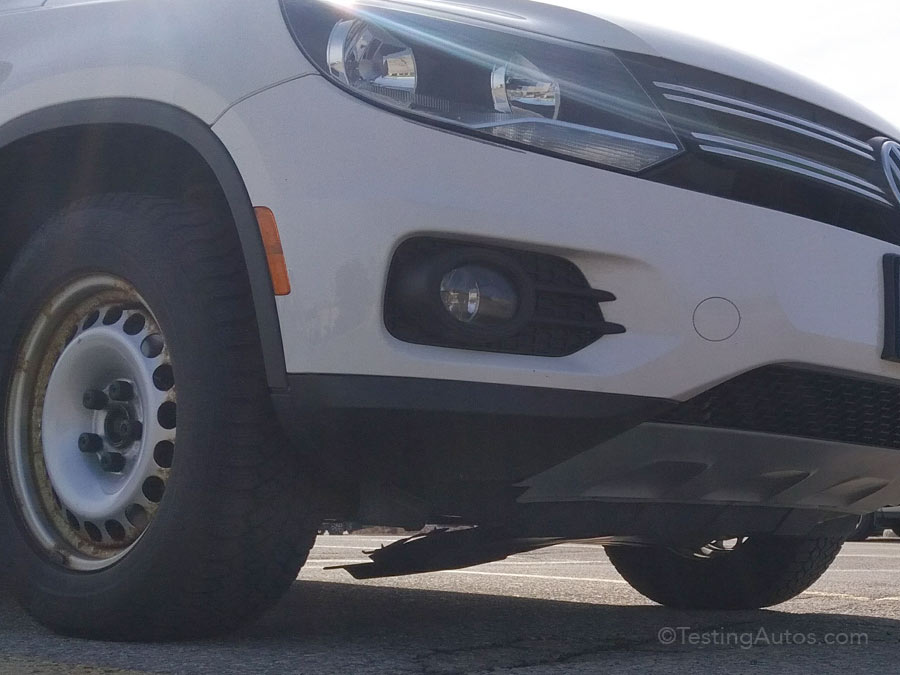The plastic cover under a car is called the splash guard or mud flap. The splash guard helps protect the car from road debris, rocks, and other materials that could be thrown up by the tires.
If you’ve ever wondered what that plastic cover under your car is called, wonder no more! It’s called a splash guard, and it’s there to help protect your car from water and debris kicked up by the tires.
Splash guards are usually made of durable plastic or rubber, and they’re attached to the underside of the car with screws or clips.
They can be found on both the front and rear of the vehicle, and some cars even have them on the sides.
While splash guards aren’t absolutely necessary, they can help extend the life of your car by keeping it clean and free of rust-causing moisture. So if you’re looking for a little extra protection for your ride, consider adding some splash guards!
Scraping Noise Under Car? Dragging Splash Shield? Try This DIY Quick Fix!
What is the Plastic Underneath My Car For?
If you take a look underneath your car, you’ll notice there are several black plastic panels. These aren’t just for show – they serve an important purpose. The black plastic panels are called splash guards or mud flaps, and their job is to protect your car from debris kicked up by the tires.
Without splash guards, rocks, mud, and other road debris would be constantly hitting and damaging the underside of your car. Splash guards help to deflect this debris away from vulnerable areas like the engine, radiator, and exhaust system. In addition to protecting your car from damage, splash guards can also help to keep it cleaner by preventing dirt and grime from being splattered all over the place.
So next time you’re washing your car or doing some under-the-hood maintenance, take a moment to appreciate those black plastic splash guards – they’re doing important work!
Do I Need the Plastic Guard under My Car?
Most carmakers design their vehicles so that the undercarriage is well protected from road debris. However, some people still choose to add a plastic guard or “skid plate” for extra protection. While this can provide some peace of mind, it’s not always necessary.
Here’s a look at when you might need a skid plate and when you can skip it.
If you drive on paved roads most of the time, you probably don’t need a skid plate. The ground clearance on most cars is already quite high, so unless you’re regularly driving over large speed bumps or potholes, your car’s undercarriage should be safe from damage.
However, if you frequently take your car off-road, a skid plate can be a worthwhile investment. When driving on rough terrain, it’s not uncommon for rocks or other debris to fly up and hit your car’s underside. A skid plate will help protect against this type of damage and keep your car running smoothly.
Ultimately, whether or not you need a skid plate is up to you. If you’re worried about protecting your car’s undercarriage, adding one may give you peace of mind. But in most cases, it’s not necessary and won’t make much difference in terms of overall protection.
How Much Does It Cost to Replace the Plastic Cover under the Car?
Assuming you are talking about the engine splash guard, it will cost around $20-$30 for the part itself. The total cost of replacement will be higher since it is necessary to remove other parts in order to access and replace the splash guard. Expect to pay around $100-$200 for labor depending on the mechanic and location.
What is the Thing Underneath Your Car Called?
Assuming you are referring to the part of the car that sits beneath the engine, this would be called the chassis. The chassis is the frame that supports the rest of the vehicle and contains many of its key components. This includes things like the suspension, brakes and wheels.
In some cars, the chassis may also house the engine and transmission.

Credit: www.insightcentral.net
Plastic Cover under Car Fell off
If you have a plastic cover under your car and it falls off, don’t panic! This is a common problem that happens to many car owners. Most likely, the cause is simply that the adhesive holding the cover in place has come loose.
In most cases, you can easily fix this problem yourself.
Here’s what you’ll need to do:
1. Remove any debris from the area where the cover fell off.
This includes dirt, gravel, leaves, etc. You want to make sure the surface is clean so that the new adhesive will stick properly.
2. Inspect the area for any damage.
If there are any cracks or holes in the plastic, you’ll need to repair them before proceeding. Otherwise, the new adhesive will not hold and the cover will just fall off again.
3. Apply a generous amount of adhesive to both the car and the cover itself.
Be sure to use an adhesive that is specifically designed for automotive applications – regular glue will not work properly. Many adhesives come with application tips that can help make this step easier (and less messy).
4. Press the cover into place and hold it there for several minutes while the adhesive sets up.
Conclusion
Most people don’t know what the plastic cover under their car is called. It’s actually called a splash guard, and it’s there to protect your car from water and debris. Without it, your car would be more likely to rust and get damaged.
So, next time you’re washing your car, be sure to give the splash guard a good cleaning too!
